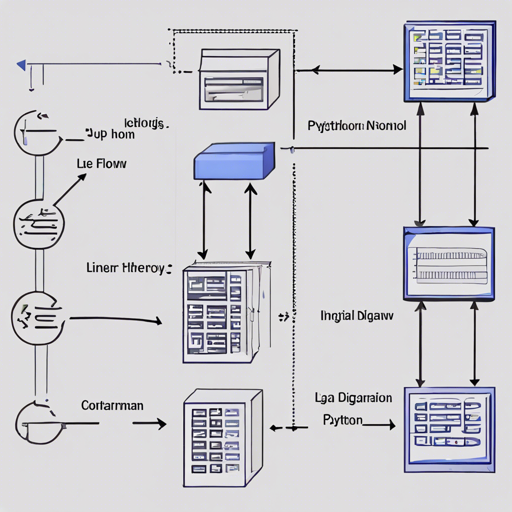PythonLinearNonlinearControl is an engaging library designed for implementing linear and nonlinear control theories in Python. The beauty of this library lies in its simplicity—built purely on basic libraries like SciPy and NumPy, it can be easily tailored to cater to your unique scenarios.
Getting Started
Before diving into the control algorithms, ensure that you have the library installed. Follow these straightforward steps to set up the package:
- Run the following command to install the library:
$ pip install PythonLinearNonlinearControl- If you are developing the package:
$ python setup.py develop$ pip install -e .Understanding the Architecture
The architecture of a control system can be likened to a well-orchestrated performance, where each component plays a specific role:
- Model: This represents the system dynamics and is equivalent to the orchestra’s score that outlines how each instrument interacts.
- Planner: This is like the musical director, choreographing the transitions and ensuring that the performance stays on track.
- Controller: Similar to the conductor, who decides how each musician should play their part to create harmony.
- Runner: The overall performance, which integrates all components to showcase the concert in real time.
Implementing Control Algorithms
The library features multiple algorithms that cater to both linear and nonlinear models. The table below highlights each algorithm’s capabilities:
Algorithm | Use Linear Model | Use Nonlinear Model | Need Gradient (Hamiltonian) | Need Gradient (Model) | Need Hessian (Model)
------------------------------------------|------------------|---------------------|----------------------------|----------------------|----------------------
Linear Model Predictive Control (MPC) | x | x | x | x | x
Cross Entropy Method (CEM) | x | x | x | |
...
If your model is nonlinear, consider linearizing it to apply the algorithms designed for linear control.
Example Workflow
Here’s a succinct workflow to get you started with the library:
from PythonLinearNonlinearControl import configs
from PythonLinearNonlinearControl import envs
from PythonLinearNonlinearControl import models
from PythonLinearNonlinearControl import planners
from PythonLinearNonlinearControl import controllers
from PythonLinearNonlinearControl import runners
# Configuration
config = configs.CartPoleConfigModule()
env = envs.CartPoleEnv()
model = models.CartPoleModel(config)
controller = controllers.CEM(config, model)
planner = planners.ConstantPlanner(config)
runner = runners.ExpRunner()
# Run the simulation
history_x, history_u, history_g = runner.run(env, controller, planner)
This snippet imports the necessary modules, sets up configurations, and runs a simulation for the CartPole environment using the Cross Entropy Method.
Troubleshooting and Tips
- If your simulation isn’t yielding expected results, double-check the controller parameters like Q and R, as these significantly influence performance.
- Preview the example scripts provided in the library to understand various implementations better.
- Ensure that all dependencies are installed, including NumPy, SciPy, and matplotlib for visual representations.
For more insights, updates, or to collaborate on AI development projects, stay connected with fxis.ai.
Conclusion
Embarking on the journey of implementing control systems has never been easier with PythonLinearNonlinearControl. Remember, fine-tuning your models and controllers can lead to significantly better outcomes in your simulations. Happy coding!
At fxis.ai, we believe that such advancements are crucial for the future of AI, as they enable more comprehensive and effective solutions. Our team is continually exploring new methodologies to push the envelope in artificial intelligence, ensuring that our clients benefit from the latest technological innovations.

